🖼️ Claude Monet, Master of Light and Color
By Alpha Reproduction
Claude Monet (1840–1926) is one of the most iconic artists in the history of painting. Considered the founder of the Impressionist movement, he revolutionized art by moving away from academic conventions to capture the fleeting impressions of reality. His painting is distinguished by a unique approach to light, reflections, and atmospheric variations.
Rather than representing shapes precisely, Monet sought to convey an immediate visual sensation, a suspended moment, often outdoors and under different daylight conditions. From his famous Water Lilies to Impression, Sunrise, he produced numerous series, tirelessly exploring seasons, hours, climates, and color vibrations.
In this article, Alpha Reproduction invites you to discover the 10 most famous paintings by Claude Monet — timeless masterpieces that have marked the history of art and continue to amaze enthusiasts and collectors alike.
🌟 1. Impression, Sunrise (1872)
The painting that gave its name to Impressionism
Peint en 1872 depuis la fenêtre d’un hôtel surplombant le port du Havre, Impression, Soleil Levant est sans doute l’œuvre la plus symbolique de Claude Monet. Avec ses tons brumeux, ses reflets mouvants sur l’eau et son célèbre soleil orange perçant l’atmosphère du matin, le tableau rompt avec la représentation réaliste pour privilégier la sensation instantanée.
Presented in 1874 at the first exhibition of the "Independents" (who would become the Impressionists), this canvas provoked mockery from some critics. One of them, Louis Leroy, ironically used the term impressionism to mock the apparent blur of the painting — a word that would nevertheless give its name to an entire artistic movement.
By its boldness, apparent simplicity, and luminous rendering, Impression, Sunrise perfectly embodies Monet's vision: to paint the moment as it is perceived, rather than as it is defined. It is a visual manifesto of artistic freedom and pictorial experimentation, now considered one of the most important paintings in the history of modern art.
🌿 2. Water Lilies (1897–1926)
A monumental series, the pinnacle of his art
The Water Lilies undoubtedly represent the pinnacle of Claude Monet's work. Created during the last thirty years of his life, this series includes dozens of paintings inspired by the lily pond in his garden at Giverny, which the artist himself designed as a true sanctuary of light and reflections.
Obsessed with the play of water, sky, foliage, and reflections, Monet paints a nature without horizon, almost without reference points, where the surface of the water becomes a world in itself. It is no longer about representing a landscape here, but about conveying its soul, through an infinite variety of colors, textures, and light according to the time of day and the seasons.
Monet worked on several canvases in parallel, moving from one to another depending on the lighting, to capture the changing effects of nature. Some works in this series reach monumental dimensions, designed to envelop the viewer in an immersive experience.
Today, the Water Lilies are exhibited in the greatest museums in the world, notably in the two oval rooms of the Musée de l’Orangerie in Paris, specially arranged according to the artist's wishes. This series represents the culmination of his pictorial quest and remains one of the most powerful testimonies of the fusion between art and nature.
🏰 3. The Rouen Cathedral (Series, 1892–1894)
Play of light on Gothic architecture
Avec sa série consacrée à la Cathédrale de Rouen, Claude Monet poursuit son exploration fascinante de la lumière en mouvement. Installé face à la façade gothique de l’édifice normand, il peint la même scène à différents moments de la journée, capturant les nuances infinies du soleil et de l’atmosphère sur la pierre sculptée.
Between 1892 and 1894, Monet created nearly 30 paintings depicting this facade under different lighting conditions: misty morning, bright noon, golden or bluish evening. This methodical and passionate work perfectly illustrates his impressionist approach: to capture the moment, not through drawing, but through color and luminous vibration.
Architectural details sometimes fade in favor of a dense and textured pictorial material, where one perceives more the emotion of the moment than the exact reality of the scene. This series is a true study of visual perception, where each canvas becomes a sensitive variation of the same motif.
Today, several versions of this series are preserved in the world's greatest museums, including the Musée d’Orsay in Paris. They bear witness to Monet's unique ability to transform a fixed monument into a poetic experience of time and light.
🌸 4. The Water Lily Pond, Pink Harmony
Floral poetry and contemplative immersion
Among the many variations of the series of Water Lilies, The Water Lily Pond, Pink Harmony stands out for its chromatic softness and its soothing, almost musical composition. Here, Claude Monet abandons strong contrasts to explore a palette of blended pink, blue, and green tones, creating a delicate and enveloping atmosphere.
The gaze is invited to dive into a boundless water, where water lilies float like suspended touches of poetry. The circular composition, without a true vanishing point, gives a sensation of immersion, as if the viewer were part of the landscape. This work wonderfully embodies the contemplative spirit that inhabited Monet's later life, then almost blind, but more than ever attuned to the inner light.
Rose Harmony is one of the most appreciated variations of the series, for its balance between abstraction and nature, between impression and emotion. It is a canvas that soothes, envelops, and inspires, ideal for anyone looking to introduce a note of floral serenity into their interior, stemming from the genius of Giverny.
🚂 5. The Saint-Lazare Station (1877)
Monet facing industrial modernity
Avec La Gare Saint-Lazare, Claude Monet s’empare d’un sujet résolument moderne : l’univers bruyant et animé des chemins de fer. Peinte à Paris en 1877, cette œuvre fait partie d’une série de douze tableaux consacrés à cette gare emblématique, symbole de l’industrialisation triomphante du XIXe siècle.
Far from bucolic landscapes, Monet lingers here on the steam of the locomotives, the plays of light filtered through the glass roof, the metal structures, and the daily hustle. The steam becomes a pictorial element in its own right, blurring shapes, diffusing light, creating an almost unreal atmosphere.
By choosing this urban and industrial subject, Monet revolutionizes the way the city is depicted: he does not seek architectural precision, but rather the sensory effect, the immediate visual impact. The station becomes a theater of light and movement, a place of constant transformation, reflecting the image of a changing modern society.
La Gare Saint-Lazare thus marks a bold break with academic tradition and a new step in Monet's quest: to paint not what one sees, but what one feels in the moment.
🏞️ 6. The Stroll (1875)
Family life scene and breath of fresh air
Dans La Promenade, Claude Monet nous livre une scène intime et pleine de légèreté, peinte en plein air à Argenteuil. Sur cette toile baignée de lumière, on découvre Camille Monet, l’épouse du peintre, et leur fils Jean, en train de marcher dans un champ verdoyant par une journée ensoleillée.
The work conveys an immediate sensation of movement and air: the grass seems to ripple, Camille's dress floats in the wind, and the parasol gently leans in an invisible but very present breeze. Monet captures here not only a scene of life but the very essence of a fleeting moment, in all its freshness and poetry.
The slightly low-angle framing, with a vast and bright sky, emphasizes the idea of a moment suspended between earth and sky. The brushwork is soft, vibrant, almost musical, enhancing this impression of spontaneity.
The Promenade perfectly embodies Monet's art of making the ephemeral eternal, and illustrates his ability to transform a simple family moment into a masterpiece of grace and naturalness.
🖼️ 7. The Parliament of London, Fog Effect
England seen through the mist
Lors de ses séjours à Londres au début du XXe siècle, Claude Monet est profondément inspiré par l’atmosphère unique de la capitale britannique. Parmi les sujets qu’il choisit de peindre, le Palais de Westminster, siège du Parlement, devient l’un de ses motifs de prédilection — non pour son architecture, mais pour la façon dont la lumière et le brouillard le transforment.
In The Parliament at London, Effect of Fog, Monet focuses on depicting the scene through a veil of thick mist, where the outlines fade and give way to evocation rather than precision. The reflections in the Thames, the purplish and golden tones, and the filtered sunlight create an almost mystical atmosphere, close to a dream.
This work is part of a series in which Monet paints the Parliament at different times of the day, always in search of the perfect atmospheric effect. Through these canvases, he continues his exploration of light, but also of the transformation of reality under the influence of the climate.
With this painting, Monet offers a deeply personal vision of London: a city suspended in light, water, and mist, far beyond mere description.
🏡 8. The House at Argenteuil (1873)
Peaceful snapshot of his suburban life
Painted shortly after Claude Monet settled in Argenteuil, this canvas offers an intimate and luminous vision of his daily life. The House at Argenteuil depicts the living place of the painter and his family, nestled in a flowering garden, bathed in light and bright colors. It is a peaceful scene, reflecting this period of stability, conducive to creation.
The composition breathes freshness: clear sky, blooming flowers, brilliant light. The brushwork is quick, free, almost spontaneous, emphasizing the immediacy dear to Impressionism. One perceives not only the landscape but also the emotion of the moment, the feeling of a peaceful afternoon in a corner of tamed nature.
Monet is not trying to impress here, but to capture the simple beauty of the ordinary, with accuracy and sensitivity. This painting reflects his attachment to scenes of real life and to the poetry of the everyday, always filtered through his perspective as a painter of light.
It is also a fine example of this prolific period in Argenteuil, where Monet developed a large part of his artistic vocabulary, between nature, family, and experimentation.
🌳 9. Poplars (Series, 1891)
Verticality to the rhythm of the wind
En 1891, Claude Monet entreprend une nouvelle série de toiles consacrée à une rangée de peupliers bordant la rivière Epte, près de sa propriété à Giverny. Ces arbres élancés deviennent, sous son pinceau, bien plus que de simples sujets paysagers : ils incarnent une étude du mouvement, de la lumière et du temps, dans l’esprit des Meules ou de la Cathédrale de Rouen.
Each canvas captures a different variation depending on the time of day, the season, or even the direction of the wind. The trunks, sometimes golden, sometimes bluish, stand like vertical rhythms in an ever-changing landscape. Their reflections in the water add a vibrant depth, and their repetition creates an almost musical effect.
To complete this series, Monet went as far as buying the poplars at auction, so he could continue painting them without the risk of them being cut down by the municipality. This symbolic gesture shows how much nature was for him a creative partner.
With Poplars, Monet once again demonstrates his ability to elevate the simplest motif, transforming it into a sensitive and meditative pictorial experience, rooted in the moment but open to eternity.
🌾 10. Millstones (Series, 1890–1891)
Seasonal light and agricultural rhythms
Avec sa célèbre série des Meules, Claude Monet transforme un motif rural ordinaire — des gerbes de blé entassées après la moisson — en une œuvre magistrale dédiée à la lumière et au passage du temps. Peintes dans les champs proches de sa maison à Giverny, ces toiles représentent les meules sous toutes les lumières : à l’aube, au crépuscule, sous la neige, au printemps ou à l’automne.
Rather than varying the subjects, Monet chooses here to depict the same landscape at different times and seasons, exploring how light changes the colors, shadows, and atmosphere. It is an innovative, almost scientific approach to landscape painting, yet imbued with visual poetry.
The brushwork is soft, the colors deep or vibrant depending on the moment, and each canvas invites contemplation. These millstones, far more than simple agricultural objects, become silent landmarks in a world of constant change.
The series made history in art and the market: in 2019, one of the canvases was sold for 110.7 million dollars, making the Meules one of the most expensive Impressionist works ever auctioned.
With this series, Monet achieves the feat of turning an ordinary landscape into a universal masterpiece, a symbol of beauty in repetition, light, and the patience of the gaze.
🖌️ What Paint Did Claude Monet Use?
A free technique at the service of light
Claude Monet used exclusively oil paint, a medium he mastered with great freedom to convey his fleeting impressions of nature. Unlike rigid academic techniques, he adopted a flexible and intuitive approach, favoring the spontaneity of the brushstroke and the overall visual effect rather than meticulous detail.
He often worked on raw canvas, applying successive layers of paint, sometimes in thick paste (impasto) to accentuate the texture and capture the vibrations of light. His method also relied on transparent overlays, which allowed the underlying colors to show through and enhanced the atmospheric depth.
Monet's palette was bright and delicate: light blues, golden yellows, soft greens, pale pinks and mauves dominated his canvases. He avoided black and earthy tones, preferring to suggest shadow through color contrasts rather than dark colors.
This inventive use of oil paint made each canvas a sensory experience, where the material became light, and where the color expressed all the richness of the reality perceived in the moment.
🎨 What Is Claude Monet's Most Famous Painting?
Two iconic masterpieces, between history and emotion
Claude Monet's most famous painting is often identified according to two dimensions: historical impact and worldwide artistic recognition.
🔸 Impression, Sunrise (1872) is undoubtedly the most symbolic. It is the one that gave birth to the term Impressionism, during the first exhibition of the group in 1874. Through its simplicity, diffuse light, and bold style, it marks a break with academic painting and becomes the visual manifesto of the Impressionist movement. Its fame far exceeds the circle of art lovers: it is a cultural icon in its own right.

🔸 Les Nymphéas, quant à eux, représentent l’apogée de la carrière de Monet et jouissent d’une immense popularité dans les musées du monde entier, notamment au Musée de l’Orangerie à Paris. Leur beauté contemplative, leur format monumental et leur pouvoir immersif en font les toiles les plus admirées du public. Elles symbolisent la fusion entre art, nature et émotion pure.
Thus, depending on the point of view — historical or aesthetic —, these two works are the most famous of Claude Monet, and alone embody the entire richness of his pictorial universe.
🕰️ What Is Claude Monet's First Painting?
A modest beginning for a future master of light
The very first known painting by Claude Monet is titled View of Rouelles, created in 1858, when the artist was only 18 years old. It depicts a Norman countryside landscape, near Le Havre, where Monet grew up. This canvas still shows a realistic and academic approach, far from the free and luminous style that would later make him famous.
Although very different from his future Impressionist masterpieces, this painting already reveals his deep sensitivity to the landscape, to nature, to the ambient light. It is also during this period that Monet began painting outdoors, influenced by Eugène Boudin, who introduced him to the direct observation of the sky, reflections, and atmospheric changes.
View of Rouelles is therefore more than just a youthful attempt: it is the starting point of a vision, of an artistic vocation turned towards living reality, and the discreet origin of a genius in the making.
💰 What Is Monet's Most Expensive Painting?
A world record for a master of Impressionism
The most expensive painting ever sold by Claude Monet is a canvas from the famous series of Haystacks, created in 1890. This work was auctioned for the exceptional sum of 110.7 million dollars at an auction at Sotheby’s in New York, in May 2019.

This is a historic record for a Monet, but also one of the highest prices ever reached for an Impressionist work. This sale confirms the immense artistic and heritage value of his work, as well as the enduring appeal of collectors for his luminous and serene landscapes.
This success can be explained by several factors: the rarity of Meules on the private market, the excellent preservation of the canvas, but above all, the unique place of Claude Monet in the history of art. His timeless style, mastery of light, and influence on modern art make him one of the most sought-after painters in the world.
This record attests to the universal reach of his work, capable of appealing to both museums and major international collectors.
💎 What Is the Value of Claude Monet's Paintings?
A prestigious rating among the highest in the art market
The original paintings by Claude Monet are today among the most valuable and sought-after works in the world. Depending on the subject, period, and condition, their prices can range from a few million to over 100 million euros.
Iconic series such as the Water Lilies or the Haystacks are particularly sought after. They regularly reach record prices at international auctions, as they represent the heart of Monet's Impressionist work. Their rarity on the private market, combined with their aesthetic power, enhances their appeal to museums and wealthy collectors.
Apart from these major series, even Monet's lesser-known canvases, such as his views of gardens, Norman cliffs, or urban scenes, are traded at high prices, often exceeding 10 or 20 million euros.
This exceptional valuation reflects not only Monet's technical and poetic excellence but also his major historical influence in the evolution of modern painting. Investing in a work by Claude Monet means acquiring a fragment of artistic eternity, both heritage and emotional.
❓ FAQs about Claude Monet and his Paintings
What is Claude Monet's most famous painting?
Impression, Sunrise is considered the most iconic, as it gave its name to the Impressionist movement. However, the Water Lilies are just as famous for their beauty and their presence in major international museums.
How much is a Claude Monet painting worth?
The value of an original can range from several million to over 100 million euros. In 2019, a canvas from the Meules series was sold for more than 110 million dollars, a historic record for a Monet.
Where can one see the works of Claude Monet?
The works of Monet are exhibited in the world's greatest museums, notably at the Musée d’Orsay and the Musée de l’Orangerie in Paris, at the National Gallery in London, and also at the Metropolitan Museum of Art in New York.
What technique did Claude Monet use?
Monet painted exclusively with oil paint, using quick strokes, layers of colors, and often a thick paste, all applied on raw canvas to capture the effects of light.
What is Claude Monet's style?
He is the founder of the Impressionist movement, characterized by outdoor painting, a loose brushwork, bright colors, and a constant search for effects of light and movement.
🧡 FAQs on Alpha Reproduction – Hand-Painted Reproductions
Are your paintings really hand-painted?
Yes, all our works are entirely hand-painted with oil paint by experienced artists, respecting traditional techniques.
Can I order a Monet painting that is not listed on your website?
Absolutely. If you have a specific work by Claude Monet in mind, you can make a custom request to us. We will create the reproduction tailored to your preferences.
What is the delivery time to receive a painted reproduction?
On average, it takes 3 to 4 weeks for the creation and delivery of a custom painting. This timeframe allows our artists to ensure careful work that is faithful to the original.
Do you ship internationally?
Yes, we deliver worldwide, with secure tracking and reinforced packaging to protect your artwork during transport.
Are the paintings delivered with a certificate?
Each reproduction is accompanied by a certificate of authenticity, certifying that the artwork was hand-painted with oil paint, according to Alpha Reproduction's quality standards.
Can I customize the size or framing?
Yes, you can choose the dimensions that suit your space as well as the framing style. Our team will advise you for a harmonious integration into your decor.
✅ How to choose your Monet painting?
🧠 Find the ideal artwork according to your style and your space
Choosing a painting by Claude Monet also means adapting its atmosphere to your interior. Here are some suggestions to help you select the canvas that best suits your environment:
• 🌿 Water Lilies : perfect for a zen atmosphere, soft and relaxing — ideal in a bedroom or a calming living room.

• 🌾 Millstones : bring warmth, rhythm, and naturalness, perfect for an elegant office or a cozy dining room.

• 🌫️ Parliament of London: for a modern and theatrical touch, ideal in a contemporary interior or a space for reflection.
👉 See the full Monet collection →
🖼️ Conclusion: Why Choose a Painting by Claude Monet?
An invitation to contemplation and light
Choosing a painting by Claude Monet means bringing into your space the magic of light, the softness of landscapes, and the poetry of the moment. Each work by the Impressionist master captures a subtle emotion, a breath of air, a reflection on the water — all details that breathe calm, harmony, and beauty into your interior.
Ideal for an elegant and soothing decoration, a Monet painting fits perfectly in a living room, bedroom, office, or even a professional space. Its delicate colors and light touch create a refined atmosphere, conducive to relaxation and inspiration.
Thanks to a hand-painted reproduction, made with oil paint using traditional techniques, you can welcome into your home an authentic fragment of the Impressionist universe. At Alpha Reproduction, each canvas is crafted with the utmost care to faithfully convey the spirit, light, and emotion of Claude Monet's original works.
🎨 Make your interior a living tribute to the art of seeing differently.
🎨 Do you want to include a Monet in your interior?
Discover our hand-painted reproductions in the Claude Monet collection — International shipping, museum-quality guaranteed.




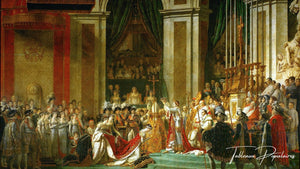
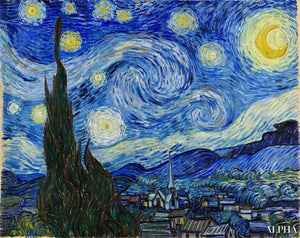
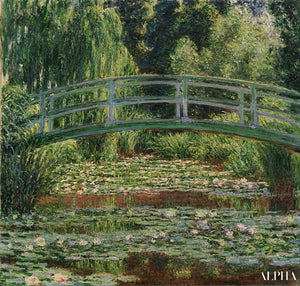
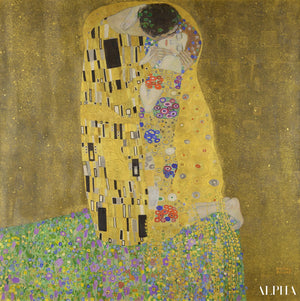
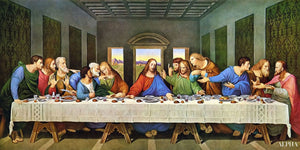

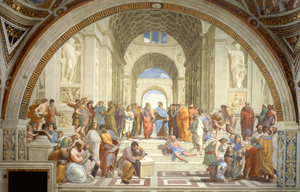
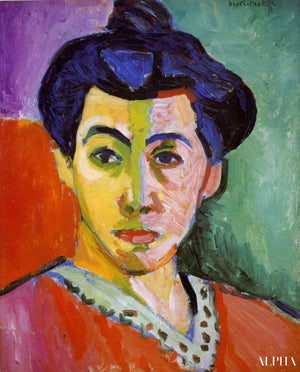
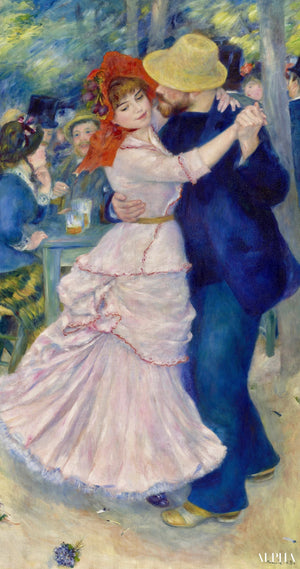

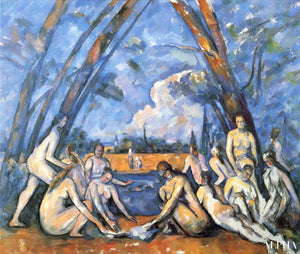
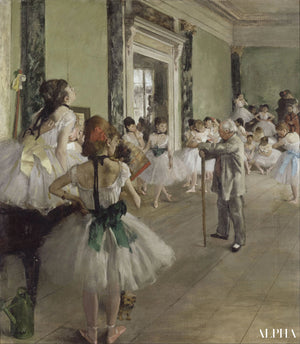
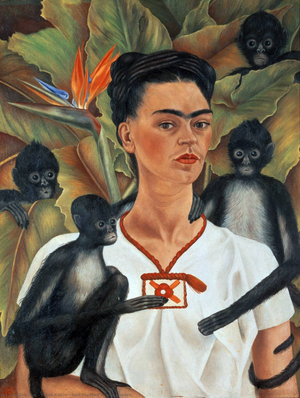

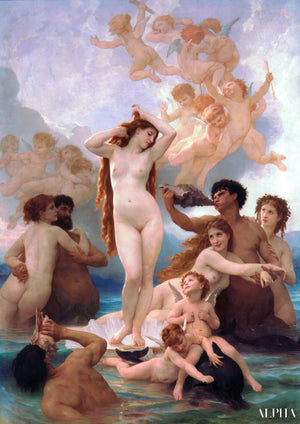
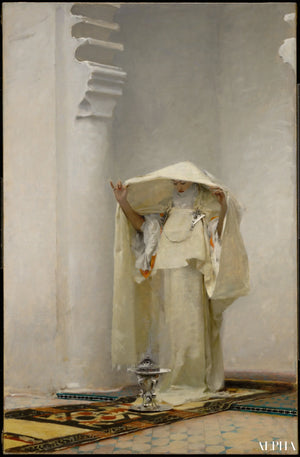



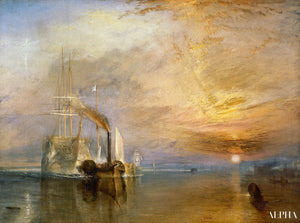











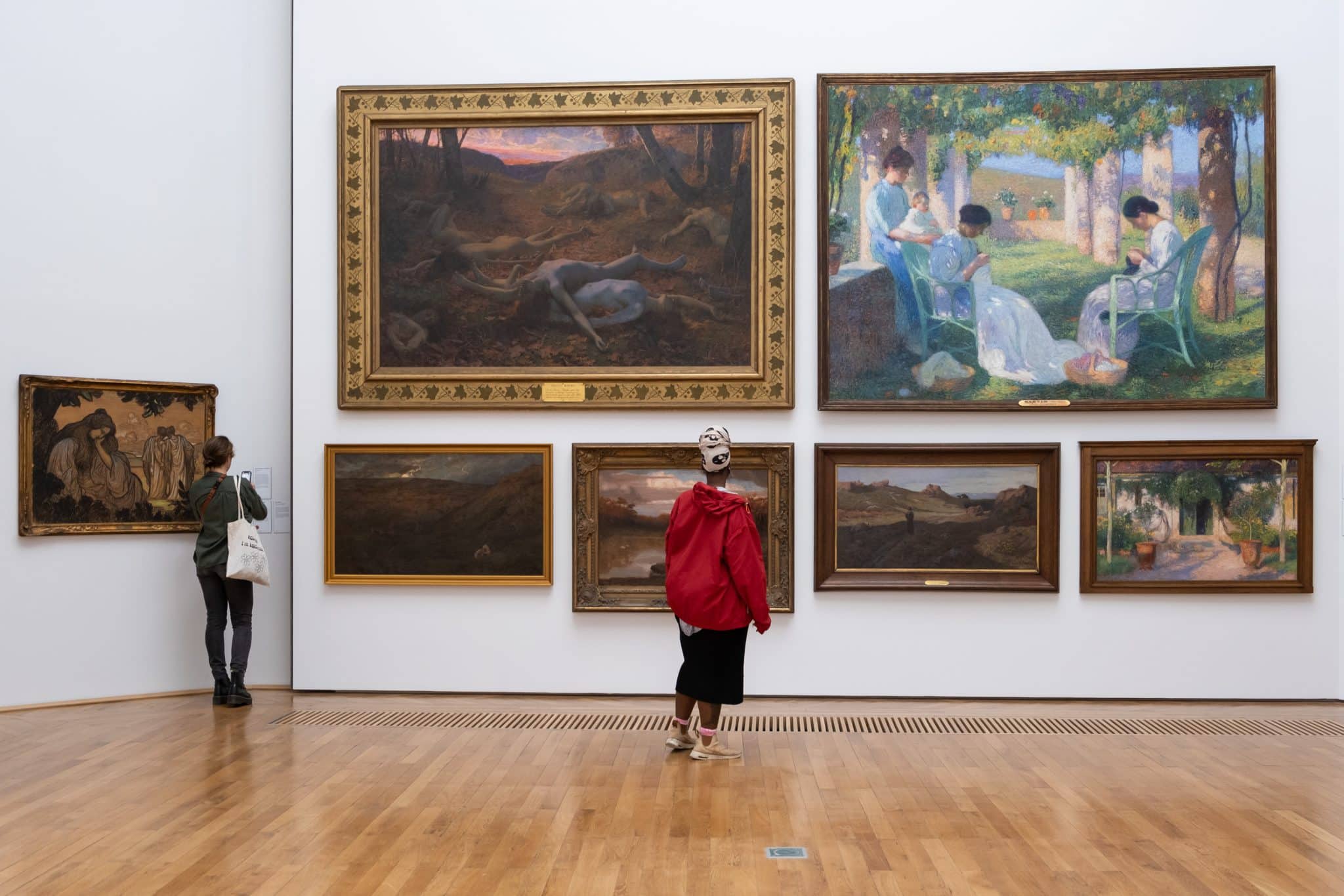
0 comments